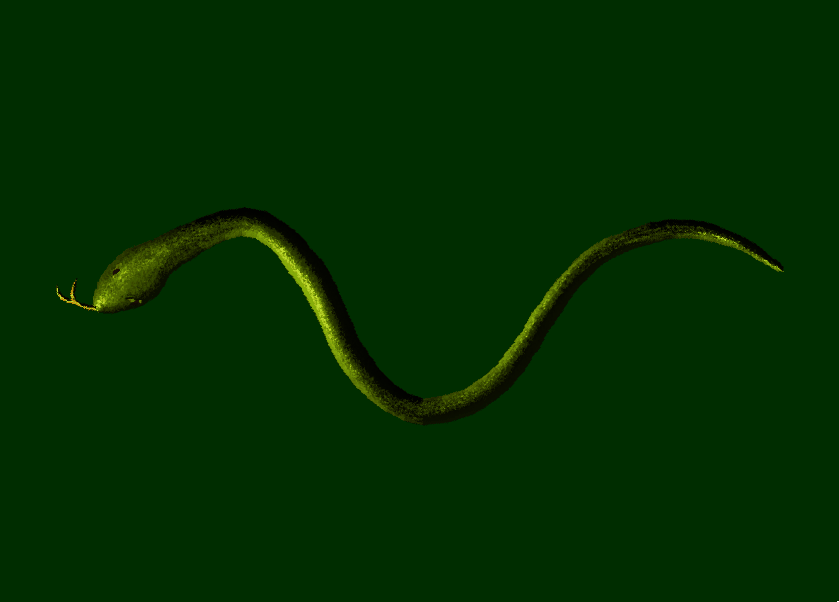
Miss Snow's Reading Lessons
Slither like a snake with S
Emergent Literacy Design
Kate Snow
Rationale: This lesson will help children identify /s/, the phoneme represented by S. Students will learn to recognize /s/ in spoken words by learning a meaningful representation (the slither of a snake resembles the letter S) and the letter symbol S, practice finding /s/ in words, and apply phoneme awareness with /s/ in phonetic cue reading by distinguishing rhyming words from beginning letters.
Materials: Primary paper and pencil; chart with “Sally’s snake slithers smoothly side to side to the stream”; crayons; ABC: An Amazing Alphabet Book (Random House, 1963) by Dr. Seuss. word cards with the WEEP, SIX, SAME, HIDE; assessment worksheet identifying pictures with /s/.
Procedures: 1. Say: Our written language is a secret code. The complicated part is learning what letters stand for – the mouth moves when we try to make words. Today we are going to work on the sound /s/ which comes from the letter, S. See if you can spot the letter S and sound /s/ when we say certain words. S looks like a snake slithering and /s/ sounds like a snake hissing.
2. Let’s pretend we are a snake by making the hissing sound, /s/, /s/, /s/. When we say /s/ we put our tongue to the roof of our mouth and blow out air to make a hissing sound.
3. Let me show you how to find /s/ in the word ask. I’m going to stretch ask out in super slow motion and listen for my snake hiss. Aaaa---s-s-s-kkkk. There it was! I felt my tongue on the roof of my mouth making the snake hiss. I can feel the snake hiss in the /s/ in ask.
4. Let’s try a tongue twister [on chart]. “Sally’s snake slithers smoothly side to side to the stream”. Everyone say it three times together! Now say it one more time and this time try to stretch out the /s/ sound at the beginning of the words. “Sssssally’s sssssnake sssssslithers sssssmoothly sssside to sssside to the sssssstream.” Try it again and this time break the /s/ off the word. “/S/ally’s /s/nake /s/lithers /s/moothly /s/ide to /s/ide to the /s/tream.
5. Have students take out primary paper and pencil. Say: We use the letter S to spell /s/. Capital S and lowercase s look very similar. The only difference is how big they are. For uppercase S, you start on the fence and make a C but going up to the rooftop, then cross the fence and loop back down to the sidewalk like you are doing a backwards C. It looks kind of like the snake we were talking about earlier. I want to see everyone’s s. After I approve it and give you a sticker, let’s try to make 10 more just like it. Then let’s try a lowercase s. You start under the fence and make a little c and then loop back, making a backwards c that ends on the sidewalk.
6. Call on students to answer and tell how they knew: Do you hear /s/ in sun or work? Made or soft? Smooth or friend? Sore or off? Say: Let’s see if you can spot the mouth move /s/ in some words. Make your snake hiss if you hear /s/: Find, bug, sail, far, shower, the, shoe, flew, sky, pink, stream
7. Say: Let’s look at the book ABC: An Amazing Alphabet Book by Dr. Seuss. He talks about a boy drinking a soda. Can you guess his name? Try to think of what the boys name could be before you look. Hint: it starts with an S and the /s/ hissing sound. Flip to the page with /s/ on it. Have each student write the name and draw him drinking a soda. Display work.
8. Show SAND and model how to see if it is SAND or HAND: The S tells me to make the snake hiss, /s/ so this word is sss-and, sand. You try some: SEEP: WEEP OR SEEP?, SIX: SIX OR MIX?, SAME: SAME OR NAME?, HIDE: SIDE OR HIDE?
9. For assessment, distribute the worksheet. Students are to say words out loud and listen for the /s/ and then color the pictures on the page. Call students up one by one to read the phonetic cue words that we listed in #8.
Reference: Byrne, B., & Fielding-Barnsley, R. (1990). Acquiring the alphabetic principle: A case for
teaching recognition of phoneme identity. Journal of Educational Psychology, 82, 805-812
Assessment worksheet: http://www.kidzone.ws/prek_wrksht/learning-letters/s.htm
Click here to return to the Travels Index
